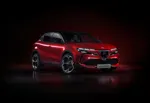Review
Three months in the Volkswagen Transporter Bluemotion have flown by and during that time its work has covered varied tasks, from commuting to carrying to a few long-distance runs.
In that time it has proved surprisingly frugal, often achieving near the official combined figure of 44.8mpg when unladen, and still almost reaching 40mpg when worked hard.
The Bluemotion features would no doubt give it a small advantage over other similar Transporters in the range, but it’s good to see that Volkswagen is pushing the boundaries of fuel economy (along with other van manufacturers) and offering choices that would strike a chord with businesses' environmental policies.
As for comfort, the cab is pretty good for a van.
I recently spent a week in another T5-derived vehicle, the Caravelle Business, which was leather-upholstered and gadget-laden, but the driving experience was similar with the exception of the six-seater’s 180bhp bi-turbo diesel and the seven-speed DSG automatic (although both are offered in the Transporter range).
And it’s no surprise that the Transporter Shuttle is often seen on private-hire airport taxi duty.
One of the options has proved surprisingly useful – as well as providing an excellent non-slip surface, the £125 floor covering is also padded and helps reduce the risk of heavy non-tethered items moving during the journey.
It allowed a number of heavy items of furniture to be moved without incident or damage.
Cab comfort for vans has long lagged behind that of cars, and it isn’t difficult to understand why.
Vans are primarily a business tool and their ability to do the job with low operating costs has been a priority.
However, our Transporter seems to have a few concessions to comfort.
The optional SE pack provides air conditioning and it has electric windows.
The driver’s seat has height adjustment as well as forward and backward adjustment for the base and the seatback. The steering wheel also adjusts for height and reach.
There should be no reason for me to be uncomfortable behind the wheel, but the addition of a full steel bulkhead limits how far back the seat can travel, and in my case it isn’t quite far enough.
Raising the seat slightly means it can be reclined a little further, but ideally I’d be happier with more movement.
I was a little concerned that a 600-mile round trip (where the Transporter would be put to work using all of its 5.8 cu m cargo area) could cause problems with backache, and wondered whether some physiotherapy might have been necessary at the end of the job.
Fortunately, I needn’t have worried. It took long motorway stretches in its stride and is also relatively easy to manoeuvre around town.
Carrying a load hasn’t hurt fuel consumption too much, either, with the trip computer settling at around 38mpg. This is around 15% lower than the official combined cycle figure.
The bespoke gearing of the Bluemotion model is paying dividends when it comes to fuel economy and it hasn’t had an adverse effect on how the van feels to drive.
We have only a month left to run with the Transporter, but already we’re won over by this capable van and the merits of the Bluemotion fuel-saving technology.
When choosing a van, its ability to do its intended job properly has always taken precedence over whether it was slightly more costly than another on fuel.
Van manufacturers traditionally haven’t been required even to publish official fuel consumption figures in the way the car manufacturers have.
But a Europe-wide drive to reduce average CO2 emissions for light commercial vehicles has led to the matter of fuel consumption and emissions being tackled.
A number of compact vans have offered stop/start technology for a while, and a few have taken it a step further with a suite of fuel-saving technologies.
Volkswagen has made available a Bluemotion variant in the Transporter.
While there are a number of Transporter diesel vans that wear the Bluemotion Technology badge, like its car range there is also a stand-alone Bluemotion model that has been optimised to deliver the best fuel consumption in the range.
The Transporter Bluemotion uses a 114bhp version of the 2.0 TDI engine and comes with stop/start technology, gear-shift indicator, revised gearing and low rolling resistance tyres.
It offers CO2 emissions of 166g/km and fuel consumption of 44.8mpg on the combined cycle.
It is also the only Transporter to be given a T27 GVW designation – as a result of the optimisation process of balancing total weight with the rolling resistance of the tyres and gearing of the vehicle.
The basic price of the van at just over £19,000 (excluding VAT) seems reasonable, and standard equipment includes electronic stability control, daytime running lights, CD/radio, and the various Bluemotion features.
The optional SE pack adds air conditioning, alarm, solid bulkhead and arm rest.
Other factory options fitted to the van include a rubber loadfloor and plywood interior panels, metallic paint, body-colour bumpers and satellite navigation.
Dealer-fit accessories include an iPod connector, rear parking sensors and a Bluetooth phone and music touch-screen kit.
The Transporter has impressed so far with its refinement and fuel efficiency, with the trip computer showing 43mpg on its first long run.
Over the next few months it should also be deployed for more typical working roles carrying loads, so we hope to report on how the Transporter maintains its award-winning appeal as well as having a modest appetite for fuel.















